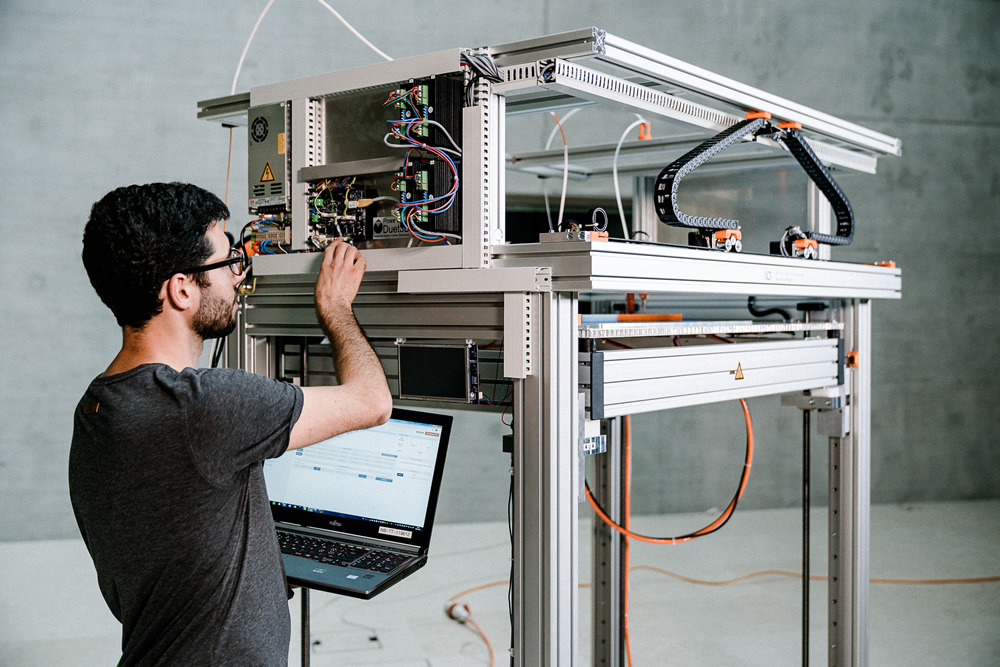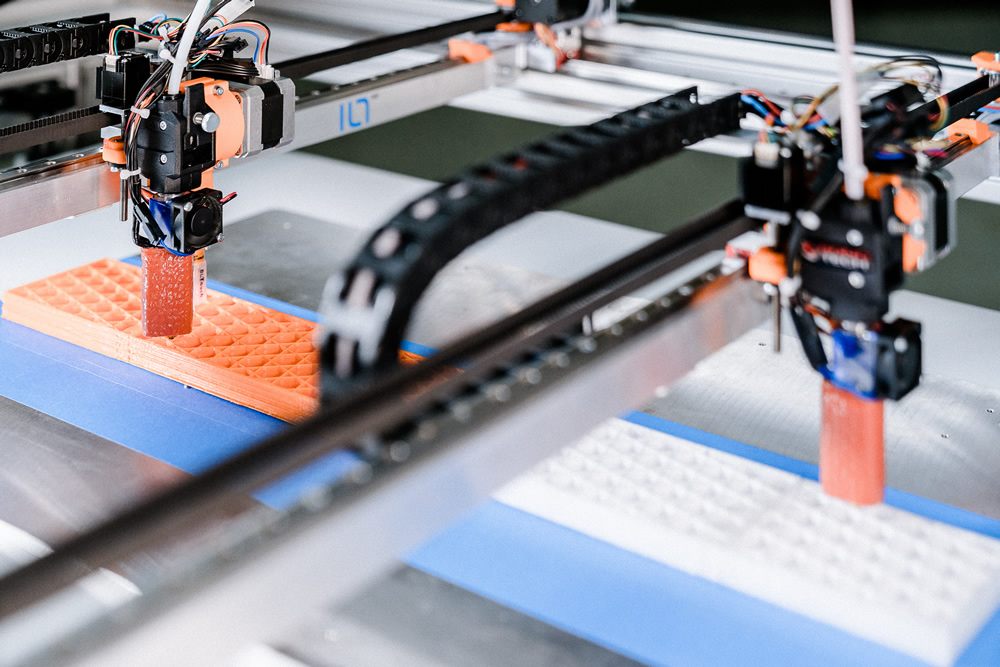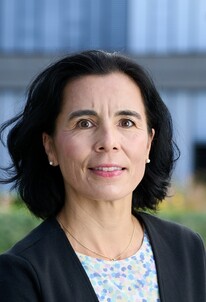Research project
Multihead 3D Printer
3D printer with multiple print heads designed for the architecture and construction industry.
Video zu ILT Multihead 3D Printer - Zwei Köpfe drucken schneller als einer
Two heads print faster than one
Digitalisation offers enormous potential for the architecture and construction industry. That is why, among other things, methods and technologies for the digital, partially automated construction industry are currently being researched in the National Centre of Competence in Research (NCCR) "Digital Fabrication". For a project at ETH Zurich, HSR has constructed a 3D printer with multiple print heads. It is being used in the ETH laboratories to test the advantages that 3D-printed components can bring.
Two 3D printing heads are working on the same plastic part as if they were talking to each other. Layer by layer, an orange-white component grows upwards on the printing plate. Project manager Marco Rossi from the ILT Institute for Laboratory Automation and Mechatronics at OST is satisfied. The collaborative 3D print heads are working as planned.
This means that the 3D printer, which is around two metres high, is ready for delivery to ETH Zurich. There, the Institute for Technology in Architecture will conduct tests and, among other things, print formwork for fresh concrete components. These are needed, for example, for complex concrete structures on site directly as a "casting mould" for fresh concrete. Today, most formwork is built from wood in time-consuming manual work.
Around 3.5 times faster
3D printers are particularly suitable because they can print even complex moulds without human intervention, for example overnight, and print any necessary supporting structures at the same time. This quickly saves several weeks when added to the construction time for an entire building. The machine designed at the HSR goes one step further with its two print heads. "Current devices were too small and too slow," explains Rossi, who is also frequently involved with 3D printing in his private life. With the 3D printer from HSR, he says, it is around 3.5 times faster than with currently available solutions. In addition, the concept is scalable both in size and in the number of collaborative print heads. This means that instead of two metres high and with two print heads, the concept could also be implemented in the form of a 3D printer several metres long with several print heads. In this way, concrete components that are necessary for larger buildings can also be realised. The vertical axis was designed in a student project in the Mechanical Engineering I Innovation course at the HSR. This was followed by further development of the kinematics and the print head by the ILT.
Collaboration as a key element
The key feature of the 3D printer is the control system for the print heads. Rossi designed them so that they never get in each other's way, even with complex shapes. This enables a high job rate, allowing parts to be printed in a short time. Previously, this required several hours or days. High productivity with high print quality - that is the basic prerequisite for the use of the new technologies in construction and architecture. "Our group is researching how 3D printing processes can be scaled to the architectural scale. The printer helps to investigate distributive CNC technologies, where several tools work in parallel on one workpiece," says ETH project leader Prof. Dr Benjamin Dillenburger. Rossi is also satisfied after the delivery of the machine: "The cooperation with ETH was very good. We were able to ideally combine their experience in printing large parts and our design skills in the development of the new 3D printer."


Project manager
Prof. Dr. Agathe Koller
ILT Institut für Laborautomation und MechatronikInstitutsleiterin ILT, Studiengangleiterin Master of Science MSE, Professorin
+41 58 257 49 29agathe.koller@ost.ch


